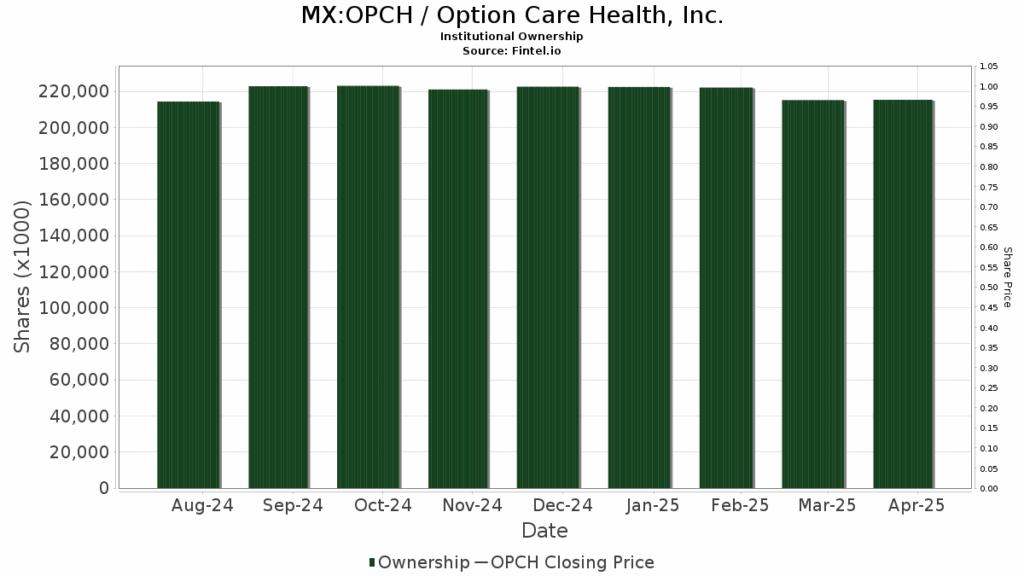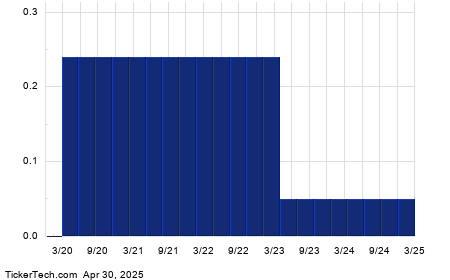“`html
Sugar Prices Decline Amid Increased Production Forecasts
May NY world sugar #11 (SBK25) on Wednesday closed down -0.16 (-0.91%), while August London ICE white sugar #5 (SWQ25) ended at -4.00 (-0.81%).
Market Trends and Production Insights
Sugar prices continued to decline this week, with NY sugar hitting a near 2-1/2 year low and London sugar reaching a 2-week low. Increased sugar production forecasts from Brazil have contributed to this trend. Unica reported that Brazil’s Center-South sugar production rose by +1.3% year-over-year (y/y) to 731,000 MT for the first half of April. This data marks the first report for the 2025/26 season. Conab also projected a +4.0% y/y increase in Brazil’s sugar production for 2025/26, estimating it to reach 45.875 million metric tons (MMT).
Demand Pressures Drive Prices Lower
On Monday, indications of a significant volume of outstanding contracts in NY May sugar futures, which expired on Wednesday, suggested weak demand, contributing to the price downturn. Over the past month, sugar prices have faced increased pressure amid predictions of higher global production. Last Wednesday, the USDA’s Foreign Agricultural Service (FAS) forecasted Brazil’s sugar output for the 2025/26 season to climb by +2.3% y/y to 44.7 MMT, up from 43.7 MMT the prior season. Additionally, India’s anticipated monsoon rains could lead to a bumper sugar crop; the Ministry of Earth Sciences predicts rainfall at 105% of the long-term average during the June to September monsoon season.
Global Production Shifts
Consultant Datagro’s March 12 estimates suggest a +6% y/y rise in Brazil’s Center-South sugar production to 42.4 MMT for the 2025/26 season. Furthermore, Green Pool Commodity Specialists projected a shift to a global sugar surplus of +2.7 MMT for the 2025/26 crop year, reversing the earlier estimated deficit of -3.7 MMT for 2024/25.
Indian Export Regulations and Future Projections
On January 20, the Indian government announced it would permit sugar mills to export 1 MMT of sugar, easing prior restrictions aimed at maintaining adequate domestic supplies. In the 2022/23 season, India permitted only 6.1 MMT of sugar exports after allowing 11.1 MMT in the previous season. Nonetheless, the Indian Sugar Mills Association (ISMA) predicts a -17.5% y/y drop in the country’s 2024/25 sugar production to a five-year low of 26.4 MMT.
Thailand’s Production Impact
Thailand’s sugar production outlook presents another bearish factor for prices. The Office of the Cane and Sugar Board recently announced a +14% y/y increase in sugar production to 10.00 MMT for the 2024/25 season. As the third-largest sugar producer globally, Thailand significantly impacts international sugar markets.
Supportive Indicators Amid Global Pressures
Despite some pressure, sugar prices found support due to lower production forecasts. Unica reported that Brazil’s cumulative sugar output through March fell by 5.3% y/y to 40.169 MMT for the 2024/25 season. The ISMA also revised its 2024/25 sugar production forecast for India to 26.4 MMT, citing lower cane yields. The International Sugar Organization raised its global sugar deficit forecast for 2024/25 to -4.88 MMT, up from a previous estimate of -2.51 MMT, indicating a tightening market compared to the global surplus of 1.31 MMT in 2023/24.
Weather-Related Challenges in Brazil
Last year’s drought and excessive heat resulted in fires that damaged sugar crops in Brazil’s leading production area, São Paulo. Green Pool Commodity Specialists estimated that up to 5 MMT of sugar cane may have been lost due to these fires. Conab predicted a -3.4% y/y decline in Brazil’s sugar production for 2024/25 to 44.118 MMT, attributing this to lower sugarcane yields stemming from the adverse weather conditions.
Global Sugar Consumption and Production Outlook
The USDA’s bi-annual report published on November 21 projected global sugar production for 2024/25 to rise by +1.5% y/y to a record 186.619 MMT. Global human consumption is forecasted to increase by +1.2% y/y to a record 179.63 MMT, while ending stocks are expected to decline by -6.1% y/y to 45.427 MMT.
On the date of publication, Rich Asplund did not have (either directly or indirectly) positions in any of the securities mentioned in this article. All information and data in this article are solely for informational purposes. For more information, please view the Barchart Disclosure Policy here.
The views and opinions expressed herein are those of the author and do not necessarily reflect the views of Nasdaq, Inc.
“`

